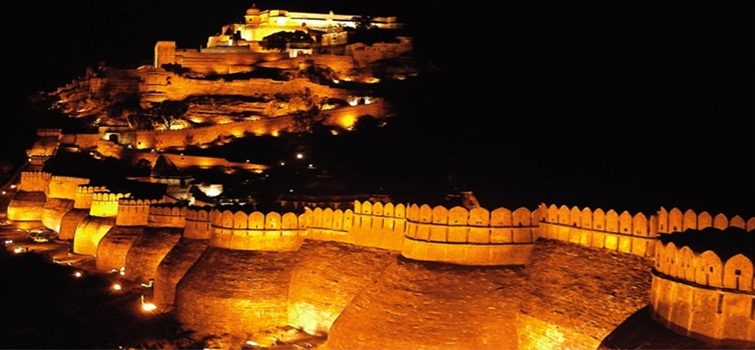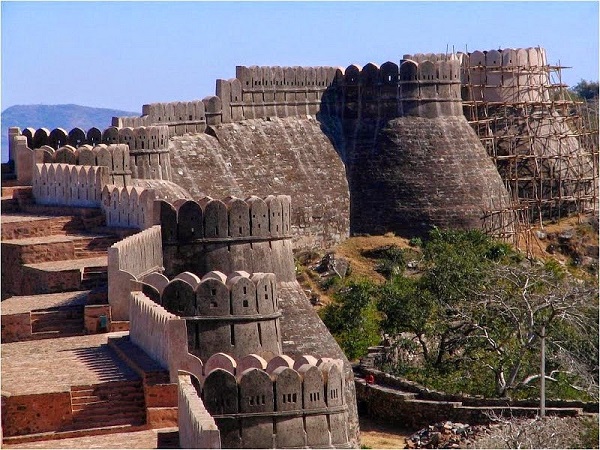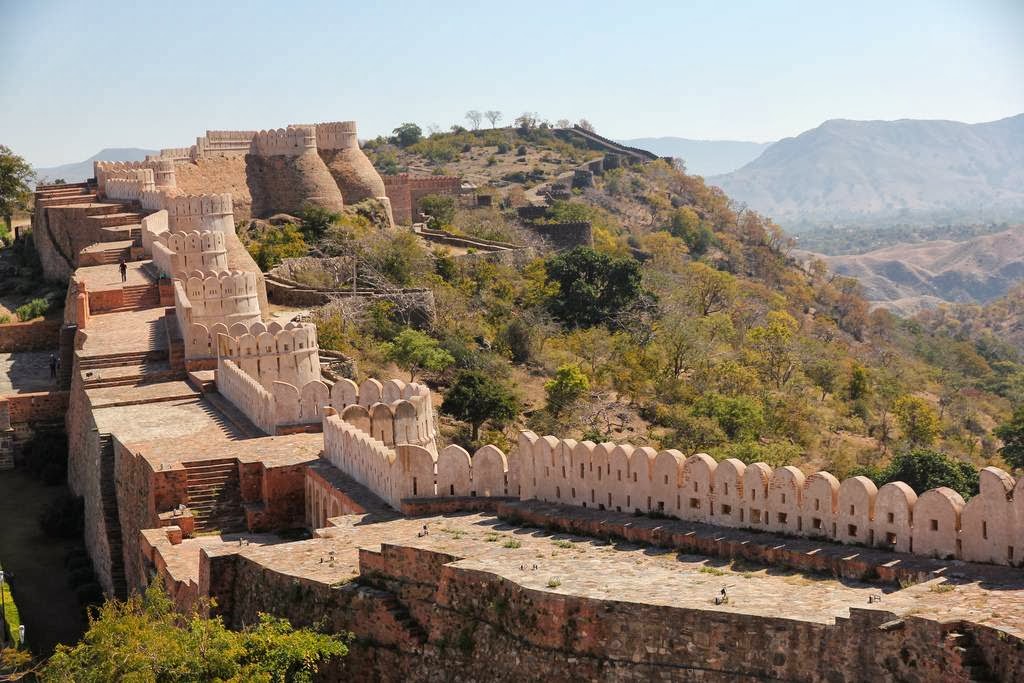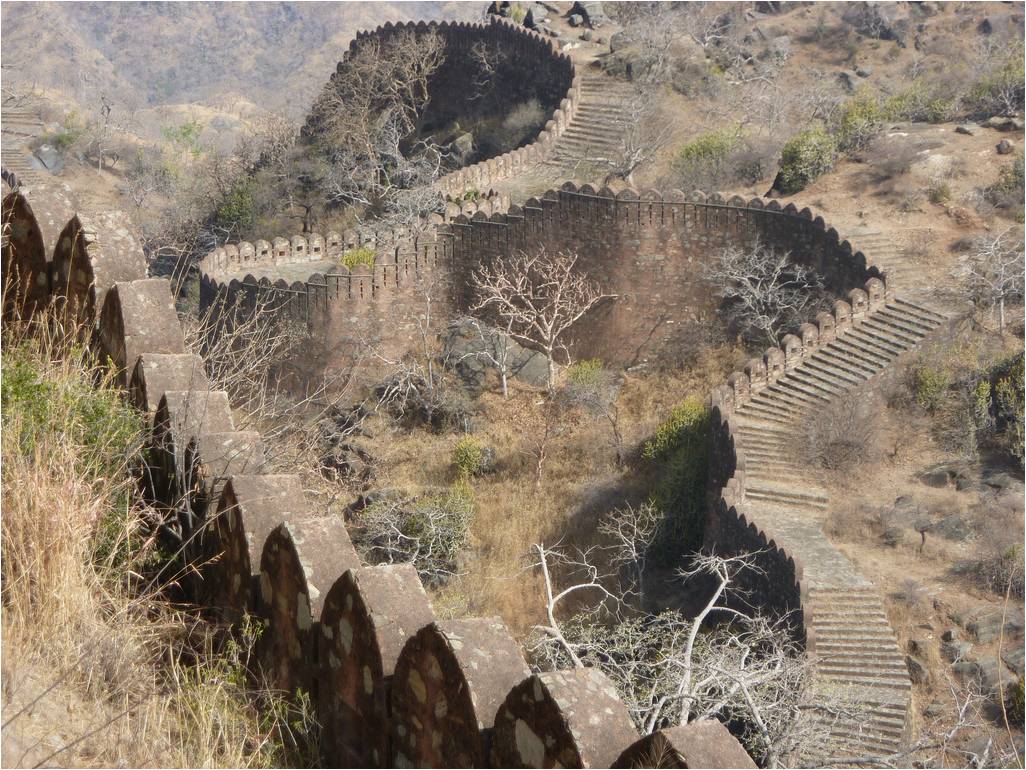Kumbhalgarh Fort Wall: The Great Wall of India
India does not envy the Great Wall of China. It is because India has a great wall too. A surprising secret to many tourists and travelers in the world, the Wall of Kumbhalgarh Fort in Rajasthan is the Great Wall of India. Indian Eagle justifies if it is right to call the Kumbhalgarh Fort Wall which stretches across the Aravalli Mountains, a jewel in the historic treasure of India.

Mewar, a historic Rajputana region in Rajasthan, is defended by some 84 forts which have been standing tall on hilltops for ages. Kumbhalgarh Fort is one of those fortresses. Rana Kumbha, the King of Mewar, had pushed the boundary of his kingdom from Ranthambore in Rajasthan to Gwalior in Madhya Pradesh in the 15th century. He himself had architected the structure of 32 forts including Kumbhalgarh Fort to safeguard the kingdom from invasions. The architecture of Kumbhalgarh Fort is said to be the most impressive, massive and robust of all.
What has made Kumbhalgarh Fort the most famous World Heritage Site among the hill forts of India is the 36-km long wall. The wall surrounding the fort of Kumbhalgarh is one of the offbeat attractions in India. It stands as a safeguard of the colossal fort that has some 360 temples. This massive, majestic and mystifying wall is not a mere structure of bricks. It zigzags through barren valleys and along mountaintops. Built of heavy stone bricks, the 15-meter wide wall of Kumbhalgarh Fort is not just an attraction but a wonder as well. Evidently, it is rightly named the Great Wall of India after the Great Wall of China.
The imposing construction of the wall reflects the fortitude and valor of the Rajputs. Built on a hilltop about 1100 m high from the sea level, Kumbhalgarh Fort is one of the few unconquerable forts in the history of India for its wall and hostile landscape. The fort has seven huge gates. The watchtowers of the fort command stunning views of the 13 peaks of the Aravalli Mountain range. The interior of the fort consists of magnificent palaces apart from 360 temples. The fort is topped by the Badal Mahal Palace with grand rooms, painted in white, green and turquoise which make an eye-catching contrast to the grey fort and the dull landscape.

The other historic fact besides the great wall that Kumbhalgarh Fort is known for is that it is the birthplace of Maharana Pratap, the legendary king and warrior of Mewar. The fort is the point of separation between Mewar and Marwar. In the Rajput history of Rajasthan, Kumbhalgarh Fort was invaded only once by the combined forces of Mughal Emperor Akbar, Raja Man Singh of Amber and Raja Udai Singh of Marwar. This Mewar fortress was renovated during the regime of Maharana Fateh Singh in the 19th century.
Today, Kumbhalgarh Fort and the surrounding wall which is next to the Great Wall of China in Asia make one of the best tourist attractions of Rajasthan. Accessible to the public, the fort can be reached from Udaipur, Ajmer, Jodhpur and Pushkar. It is said that the history of the place where Kumbhalgarh Fort was built dates back to the 2nd century, the Mauryan Era of ancient India.
Many stories of Mewar are hidden and trapped inside Kumbhalgarh Fort. Fly to India, visit Rajasthan and explore the stories behind the great wall of the fort. on IndianEagle.com and have a wonderful trip!


You May Be Interested IN